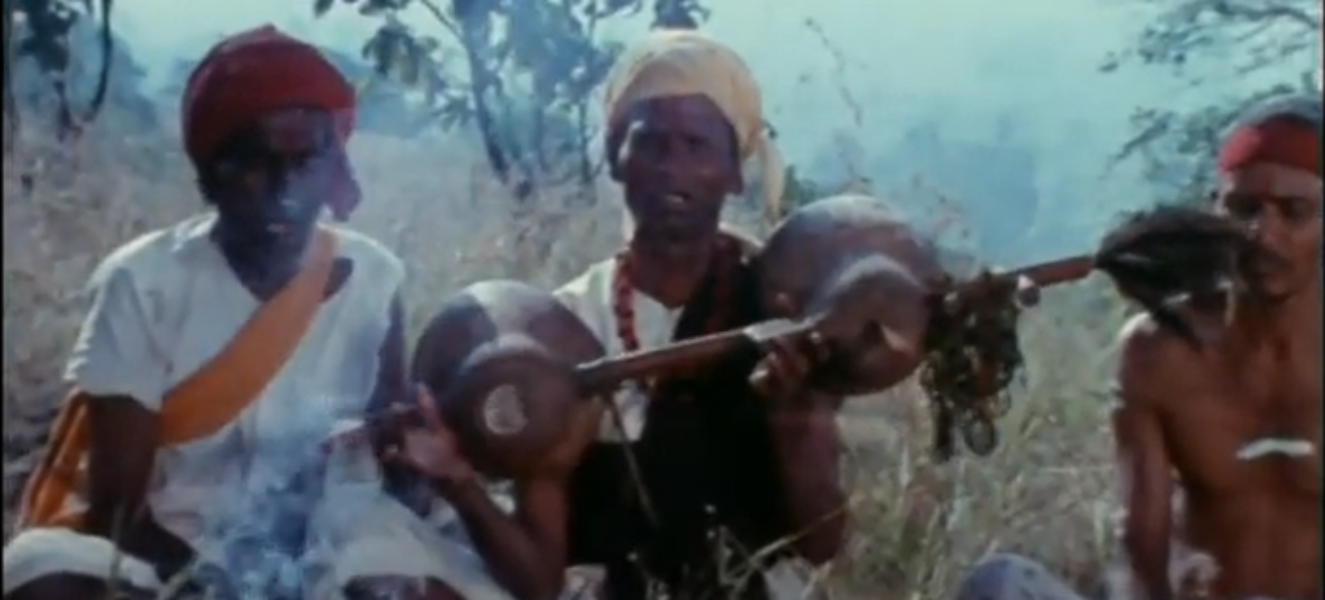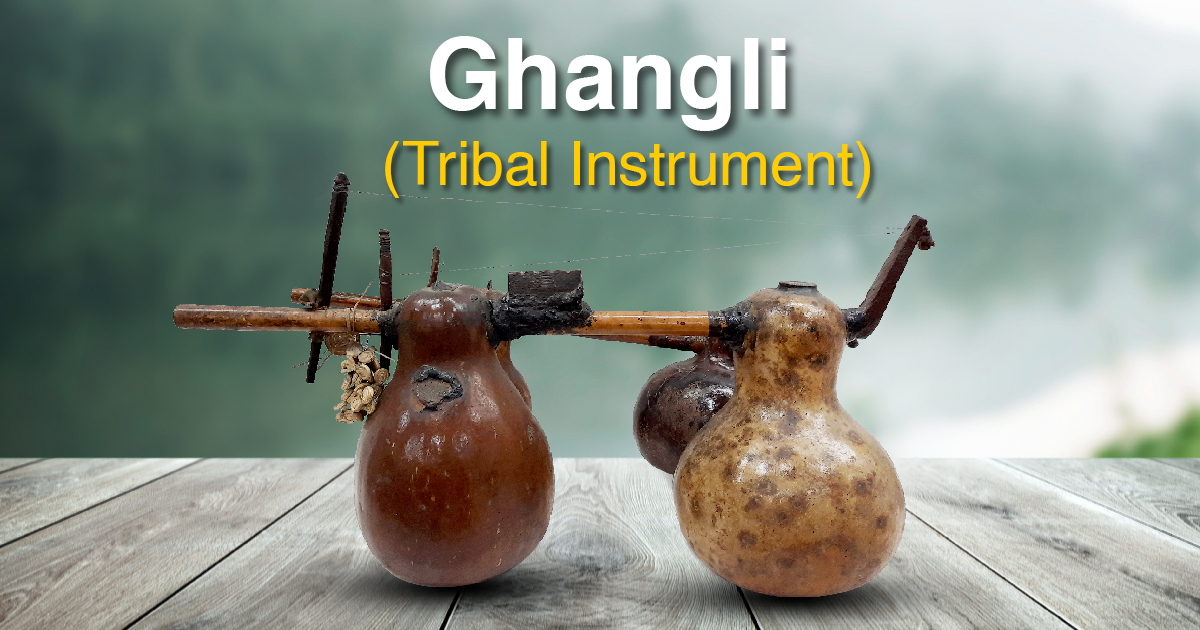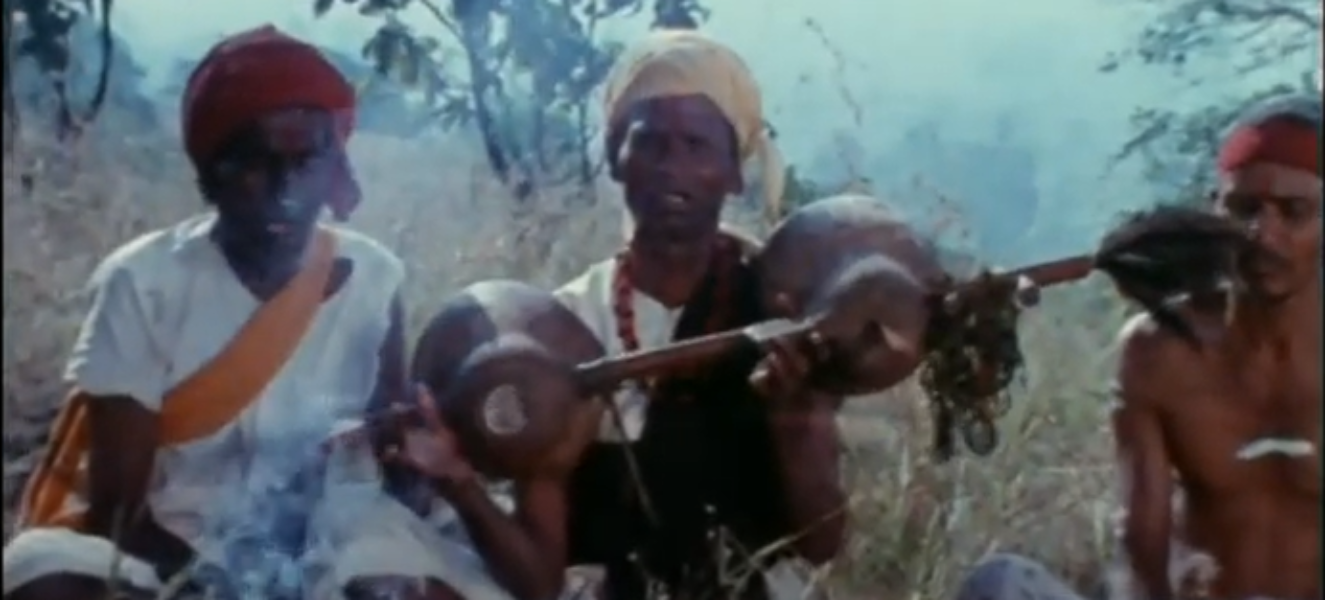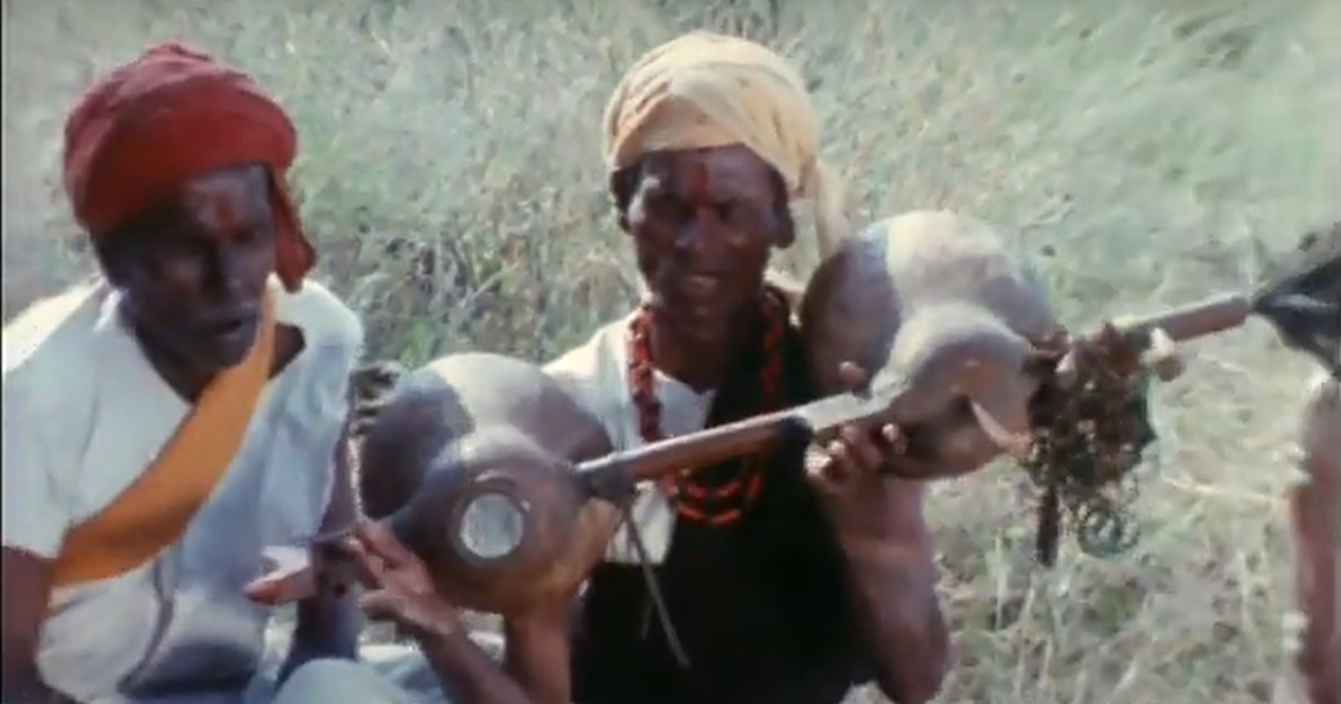
Themes
tribal music and musical instruments
Ghangali/ Zangli , maharashtra

The Ghangali, also known as Zangli, is a traditional stringed instrument played by the Warli, Thakur, Katkari, Mahadev Koli, and Pawara tribes. It shares similarities with classical Indian instruments like the 'bin' and 'veena' in both structure and sound. The instrument is primarily made from gourds and bamboo, with two hollowed-out pumpkins or gourds affixed to either end of a bamboo stick. Two or three strings are stretched across the bamboo, tuned carefully to produce a rich and resonant sound. The gourds act as resonators, amplifying the instrument’s tone and giving it a distinctive musical quality.The Ghangali plays a vital role in tribal rituals and ceremonies, being an integral part of birth celebrations, harvest festivals, and worship rituals dedicated to the goddess Kansari, the deity of grains and agriculture. The instrument’s sound is considered sacred, believed to bring prosperity and divine blessings

It is commonly played during auspicious occasions, adding a melodic charm to cultural and religious events. The playing technique involves plucking or strumming the strings while modulating the pitch by pressing them against the bamboo, creating a mesmerizing blend of rhythm and melody. Beyond its ceremonial use, the Ghangali is deeply embedded in the spiritual and cultural beliefs of these tribal communities. Its music is thought to establish a connection between the physical and spiritual worlds, particularly during rituals seeking divine intervention for a prosperous harvest. During birth ceremonies, the instrument’s tunes are believed to protect newborns from negative energies, symbolizing good fortune. Its presence in harvest celebrations expresses gratitude for a successful yield while invoking blessings for future prosperity

The instrument also serves as a medium for preserving oral traditions, often accompanying folk storytelling and traditional dance forms. The melodies played on the Ghangali help pass down myths, historical narratives, and cultural values across generations. Additionally, the craftsmanship involved in making the instrument is an inherited skill, showcasing the resourcefulness and artistry of these communities. Selecting the right materials, shaping the gourds, and fine-tuning the strings require expertise that has been preserved through generations

Apart from its spiritual and cultural importance, the Ghangali is a source of communal entertainment and social bonding. It brings people together during festivals and gatherings, creating a shared experience of music and dance. These occasions strengthen the community’s unity and reinforce their collective identity. The instrument’s rhythmic melodies encapsulate the essence of tribal heritage, ensuring that their customs and traditions continue to flourish. As both a musical and cultural symbol, the Ghangali remains a crucial part of the artistic and spiritual fabric of the Warli, Thakur, Katkari, Mahadev Koli, and Pawara tribes.

